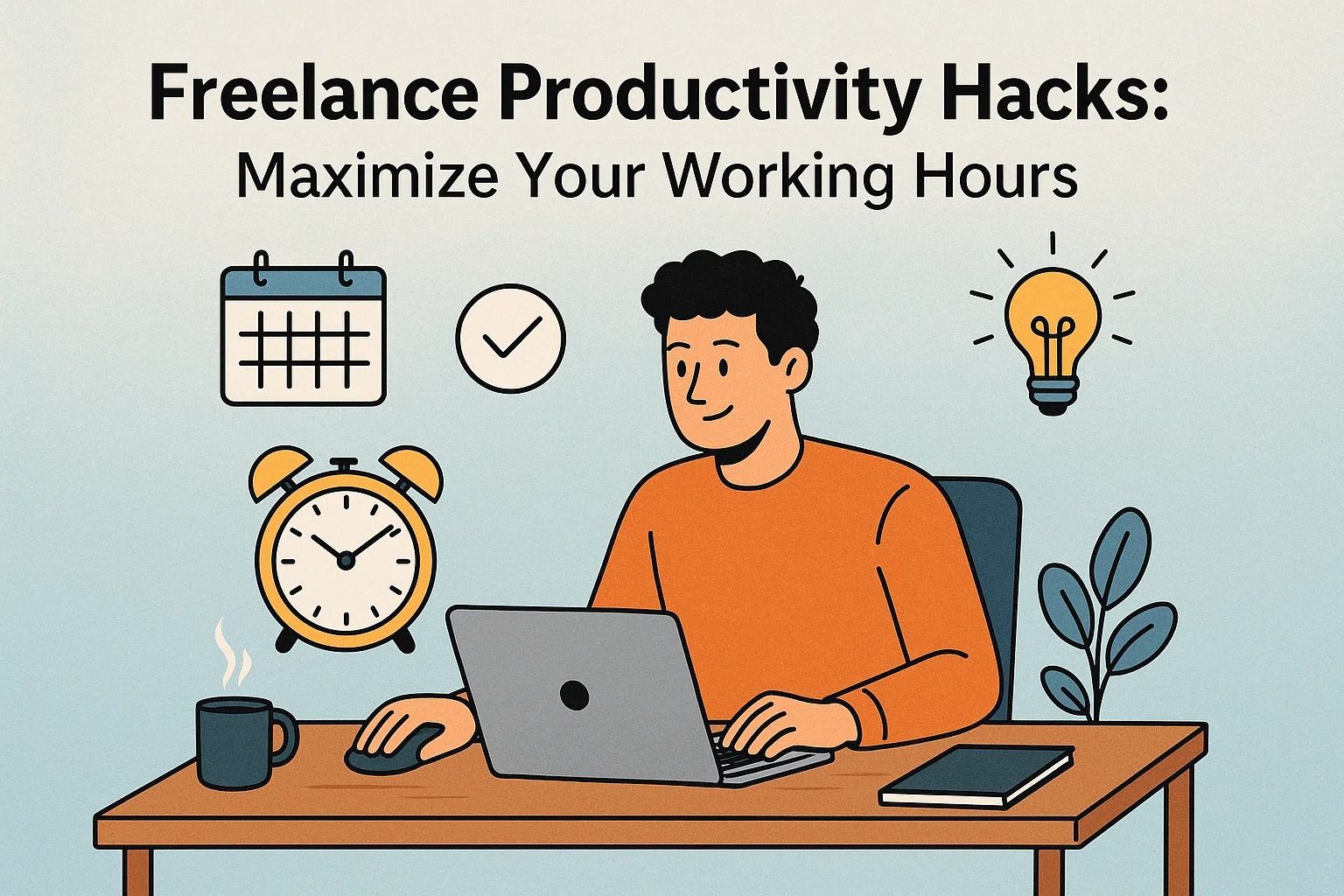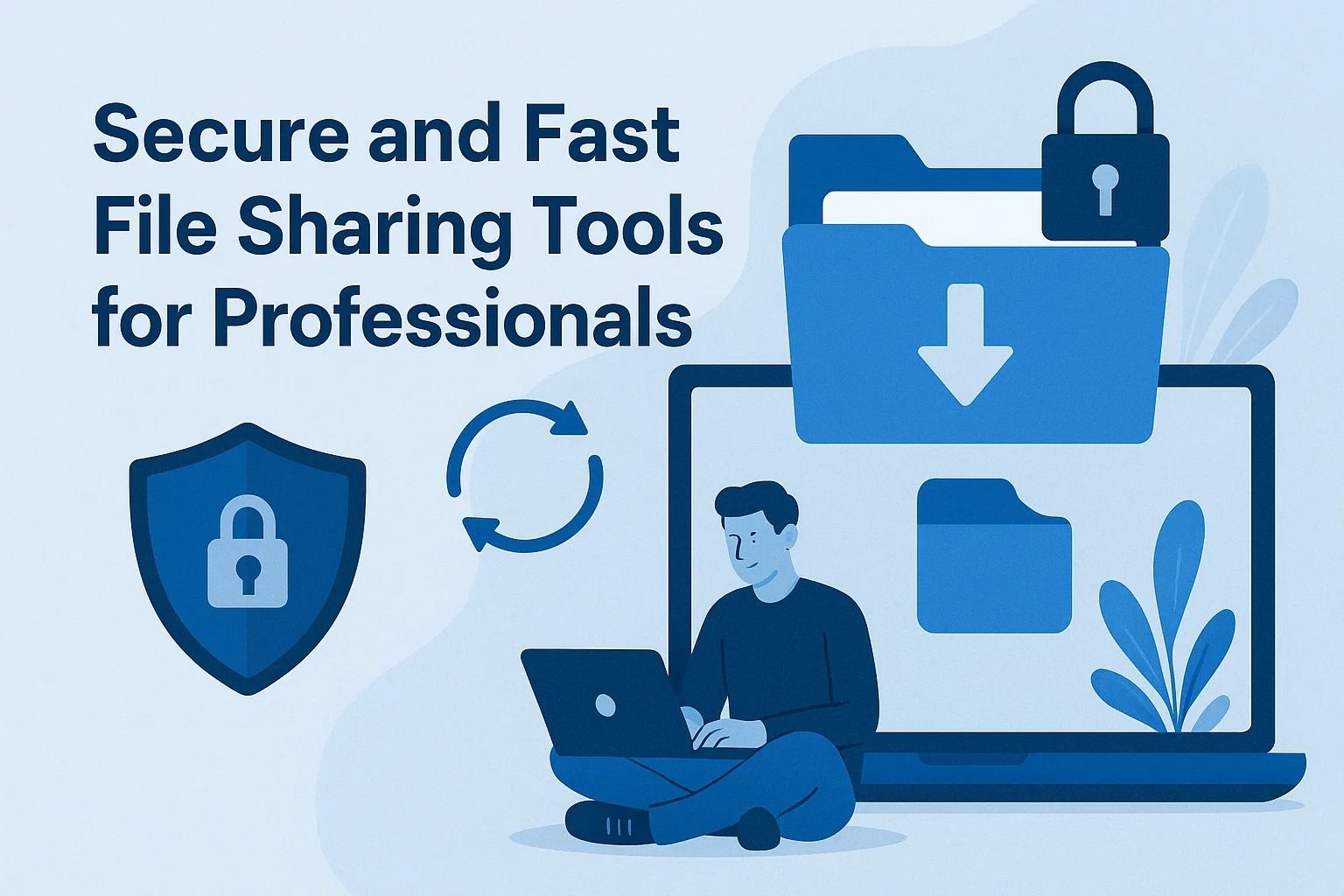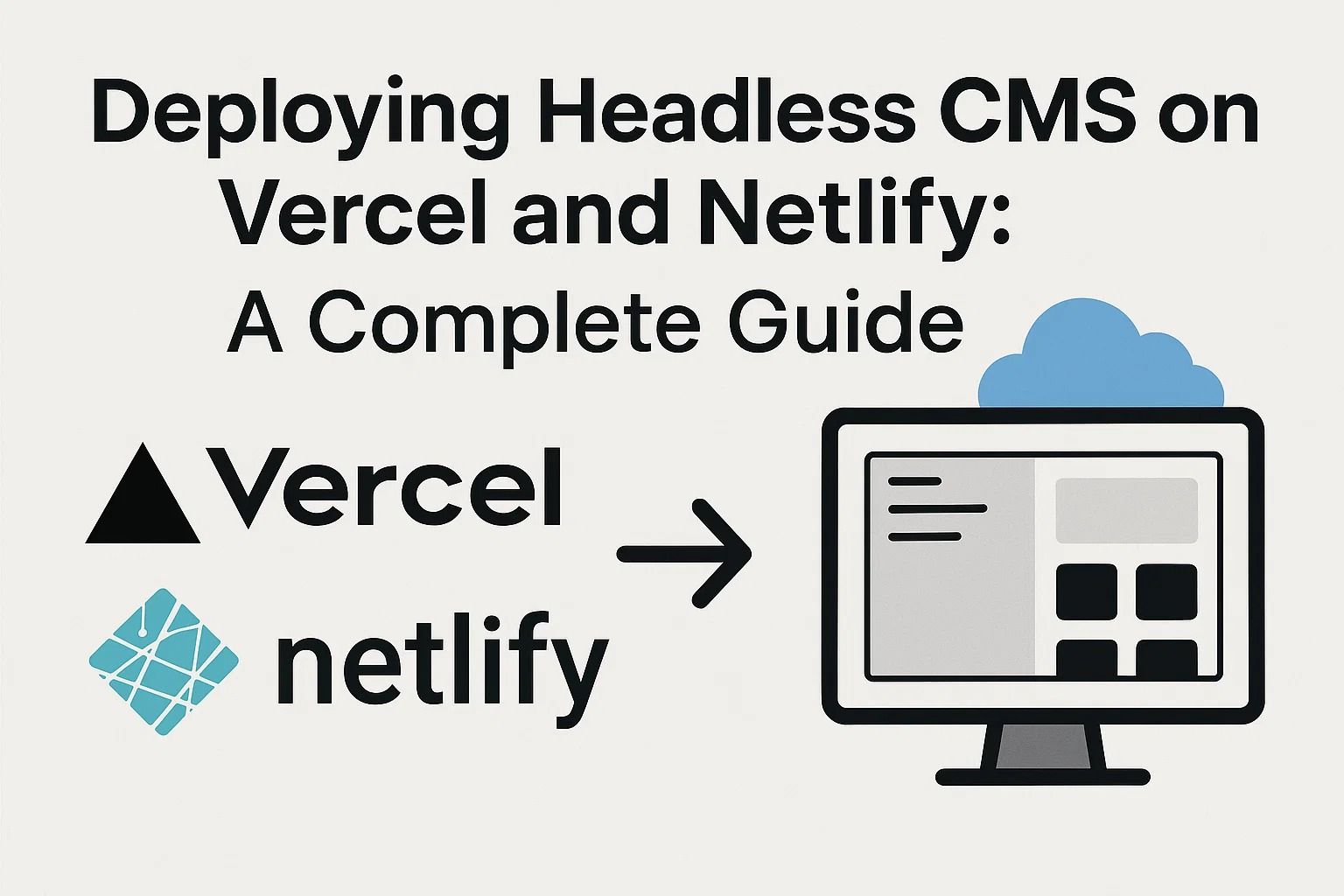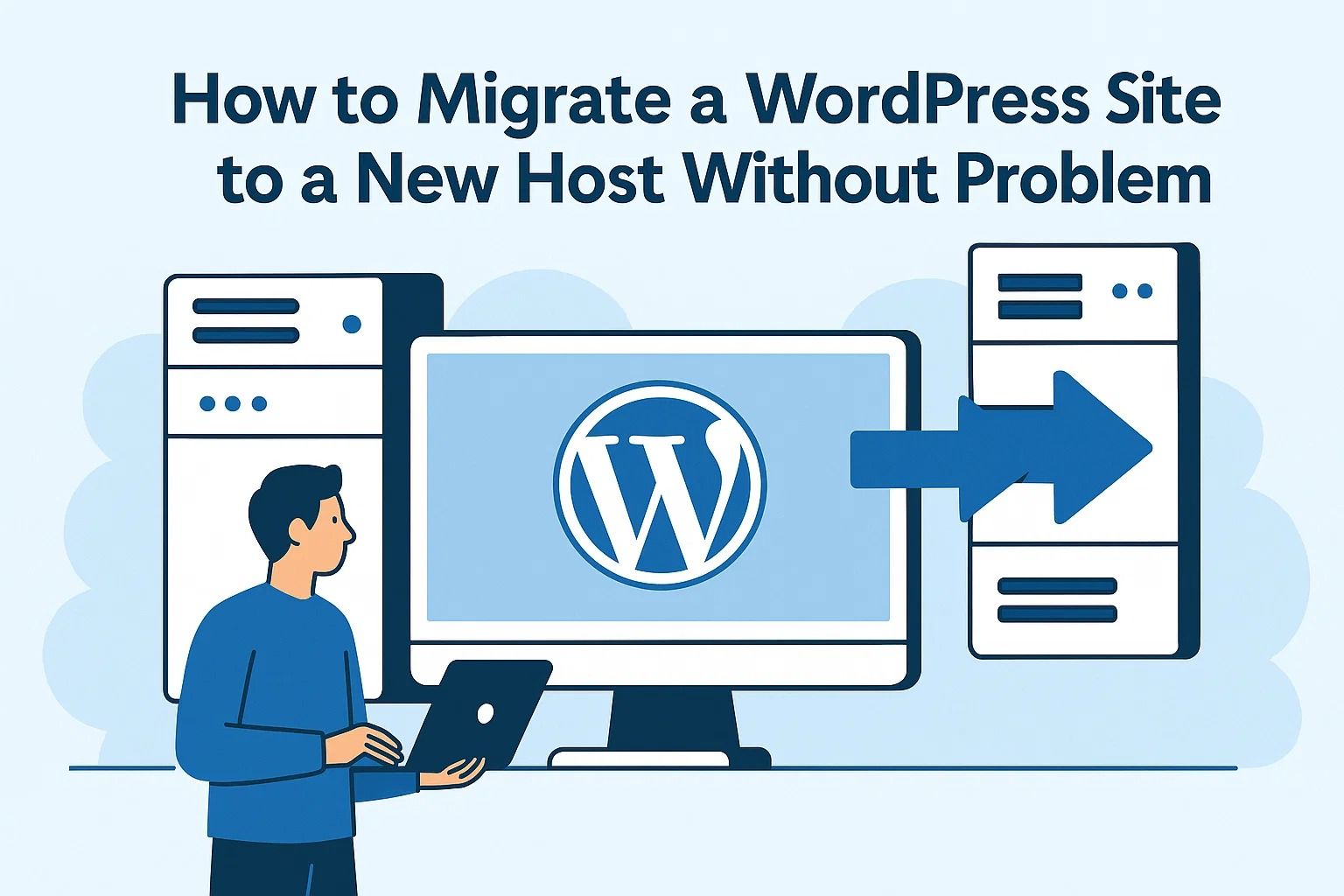
Freelance Productivity Hacks: Maximize Your Working Hours
Freelance Productivity Hacks: Maximize Your Working Hours
Updated for 2025 — Freelancing gives you freedom, but without structure, that freedom easily turns into chaos. Managing your time effectively means understanding how to prioritize, automate, and protect your focus. In this guide, we’ll uncover proven productivity hacks used by top freelancers to achieve more in fewer hours — without burning out.
The Hidden Cost of Distraction
Every interruption — a message, a notification, a thought about something unrelated — can derail your deep work for over twenty minutes. Freelancers who switch tasks frequently lose up to 40% of their effective working time. To maximize productivity, eliminate friction points that fragment your attention.
- Silence notifications: Use Focus Mode or Do Not Disturb during deep work blocks.
- Use time tracking: Tools like Toggl or Clockify help you visualize how much time you actually spend on tasks.
- Batch similar work: Reply to all client emails once or twice per day instead of constantly checking your inbox.
- Define end-of-day rituals: Closing tasks with intent helps your brain disengage, improving recovery and next-day focus.
Pro Tip: Grouping tasks by mental energy — creative, administrative, analytical — can double output by aligning your workflow with your natural focus rhythm.
Optimizing Your Work Environment
Your workspace has a direct impact on output. Remote freelancers often overlook ergonomics and environmental design, yet both shape focus quality. Start with simple but impactful improvements:
- Position your monitor at eye level to reduce fatigue.
- Use a dedicated work chair — poor posture drains energy faster than mental fatigue.
- Keep a clean desk policy: less visual noise equals fewer distractions.
- Light your workspace properly — natural light increases alertness and mood.
Digital environment matters too. Clean your desktop weekly, remove unnecessary apps, and structure your file storage logically. When your digital world is tidy, you spend less time searching and more time producing.
Time Blocking: Your Secret Weapon
Time blocking is a method where you assign fixed hours for specific categories of work — deep tasks, admin, rest, learning. By protecting each block from overlap, you train your brain to enter the right mode faster. Tools like Google Calendar or Notion can automate this system with recurring events and visual cues.
Many successful freelancers also follow the Pomodoro technique — 25 minutes of focus followed by a 5-minute break. After four cycles, take a longer rest. It’s simple but effective for maintaining mental sharpness over long days.
In the next section, we’ll dive into automation tools and workflow systems that save hours every week. For more guidance on optimizing your digital workflow, read our related article Email Management Tips for Freelancers.
Automation and Systems: Work Smarter, Not Harder
Efficiency Booster — Successful freelancers understand that productivity isn’t about working more hours — it’s about eliminating repetitive actions. Automation frees cognitive bandwidth, allowing you to focus on strategic and billable work. The more you systematize your operations, the less time you waste on logistics.
Automate Routine Processes
Every recurring task in your freelance business can be automated or streamlined. Start by identifying repetitive actions — sending invoices, tracking time, posting on social media, or managing client communication. Then, integrate automation tools that handle them with precision.
- Client onboarding: Use Zapier or Make (Integromat) to automate sending welcome emails and contracts after a form submission.
- Invoices and payments: Platforms like FreshBooks or Wave automate billing reminders and recurring invoices.
- Project updates: Tools like Trello and Asana automate task progress tracking through rules and triggers.
Automating even 30 minutes of daily repetitive work saves over 120 hours per year — that’s more than two full workweeks of regained productivity. Freelancers who combine automation with well-structured templates (contracts, proposals, invoices) operate like small agencies without overhead costs.
Tip: Use template-based email responders and pre-written FAQs for common client requests. It reduces back-and-forth and maintains consistent professionalism.
Optimize Your Workflow Architecture
A productive freelancer builds systems around their strengths. Think of your workflow as a pipeline — from idea to delivery — with specific checkpoints. Use tools that integrate seamlessly instead of forcing multiple disconnected platforms.
| Workflow Stage | Goal | Recommended Tools |
|---|---|---|
| Planning | Define scope, deadlines, and deliverables | Notion, ClickUp |
| Execution | Focus sessions and progress tracking | Trello, Todoist, Google Tasks |
| Delivery | File sharing and version control | Dropbox, GitHub, WeTransfer Pro |
| Invoicing | Automate billing and reminders | Payoneer, FreshBooks |
When these systems work together, context switching drops dramatically. You always know what to do next without mental friction. It’s the foundation of sustainable output.
Leverage Templates and Checklists
Freelancers often underestimate the time lost reinventing processes. Creating repeatable templates for quotes, client briefs, or reports can save hours per project. Checklists ensure consistency — whether you’re delivering copy, designs, or code.
- Build a client handover checklist with final deliverables, feedback requests, and next-step instructions.
- Keep a marketing routine checklist — LinkedIn posts, portfolio updates, and newsletter drafts.
- Use project templates in tools like Notion or ClickUp for recurring tasks.
Delegation and Outsourcing
Once your systems are stable, delegation becomes easy. Outsource time-consuming administrative or design tasks to virtual assistants via Upwork or Fiverr. It’s not a cost — it’s leverage. Your focus stays on high-value work while the backend runs automatically.
Automation is not about replacing effort — it’s about amplifying results. In the next part, we’ll explore mental frameworks, focus optimization, and advanced scheduling habits used by top-performing freelancers. For related insights, see our article How to Use VPNs and Device Isolation for Multi-Account Strategies.
Mindset, Energy, and Advanced Focus Strategies
Peak Performance Mode — Productivity isn’t just about apps and automation. It’s about how well your brain and body perform. Freelancers who master mental clarity, rest, and focus techniques gain a long-term advantage — they produce more, with less stress, and sustain creativity for years.
Build a Professional Mindset
Freelancing blurs the line between life and work. Without structure, it’s easy to overwork or procrastinate. A professional mindset means you treat your freelance business like a company — with clear rules, time boundaries, and measurable goals.
- Set core working hours and enforce them. Routine trains focus.
- Plan your week on Sunday — no spontaneous chaos.
- Use a task priority system: urgent vs. important tasks separated visually.
- Define “off” hours to prevent burnout and protect creativity.
Energy Management Beats Time Management
You can’t manage time — it flows regardless. What you can manage is energy. Observe your performance curve throughout the day. Most freelancers have two or three peak focus windows. Schedule deep work within those periods and use low-energy hours for lighter tasks.
Pro Tip: Track your energy levels hourly for a week. Use that data to plan your ideal work rhythm — not someone else’s.
Nutrition, movement, and rest also define productivity. Micro-breaks every 60–90 minutes restore concentration. Hydration alone can boost alertness by 10–15%. Replace constant caffeine with steady hydration and short physical resets.
Advanced Scheduling Tactics
Freelancers who master scheduling rarely feel overwhelmed. Apply the 3-3-3 Rule — work on three main tasks daily, three weekly goals, and three major monthly outcomes. This keeps focus narrow and output consistent.
- Daily reset: Review progress at the end of each day and plan the next morning.
- Weekly reflection: Evaluate completed projects and identify wasted effort.
- Monthly goals: Set measurable outcomes — income, clients, portfolio improvements.
Use visual tracking tools like Notion dashboards or Google Sheets progress logs to monitor metrics such as billable hours, client satisfaction, or revision rates. Consistent review prevents burnout and improves decision-making.
Mental Detox and Creative Recovery
True productivity isn’t permanent focus — it’s a cycle of focus and recovery. Disconnect fully during off-hours. Schedule device-free blocks, spend time outdoors, and avoid passive scrolling. Mental emptiness is not wasted time; it’s cognitive maintenance.
High-performing freelancers use creative sprints — alternating deep project phases with 1–2 days of light tasks or rest. This prevents fatigue and preserves enthusiasm.
Long-term success as a freelancer depends on systems, energy, and boundaries. Master these three, and you’ll outperform 90% of the workforce without adding hours. Productivity is not intensity — it’s intelligent control of attention.
For more practical methods to protect your focus and workflow, visit our related guide Freelance Productivity Hacks or explore Email Management Tips for Freelancers.
















